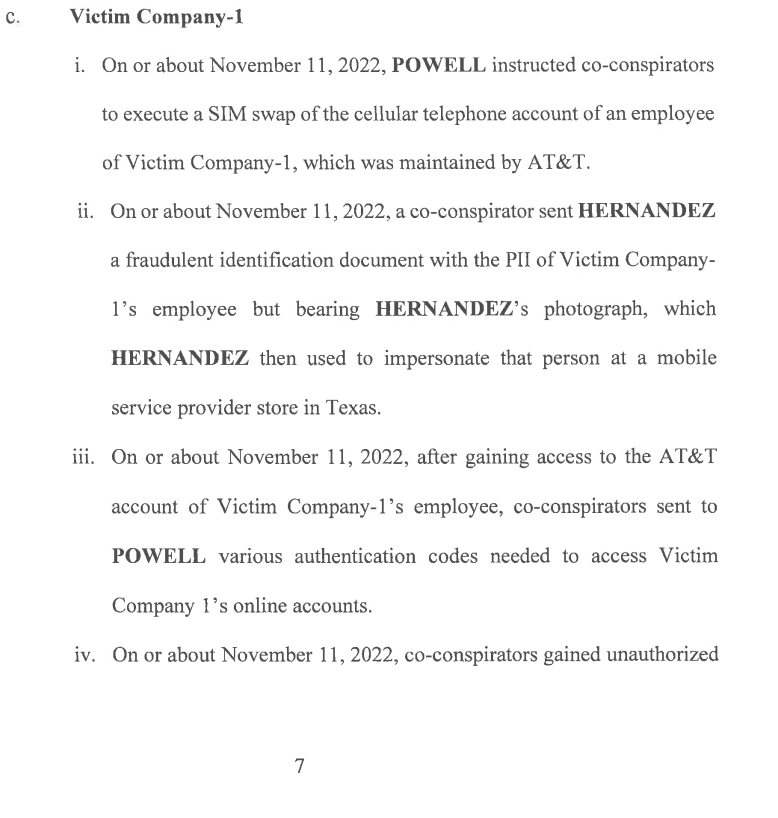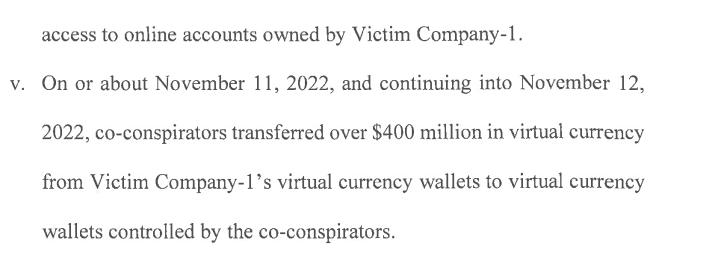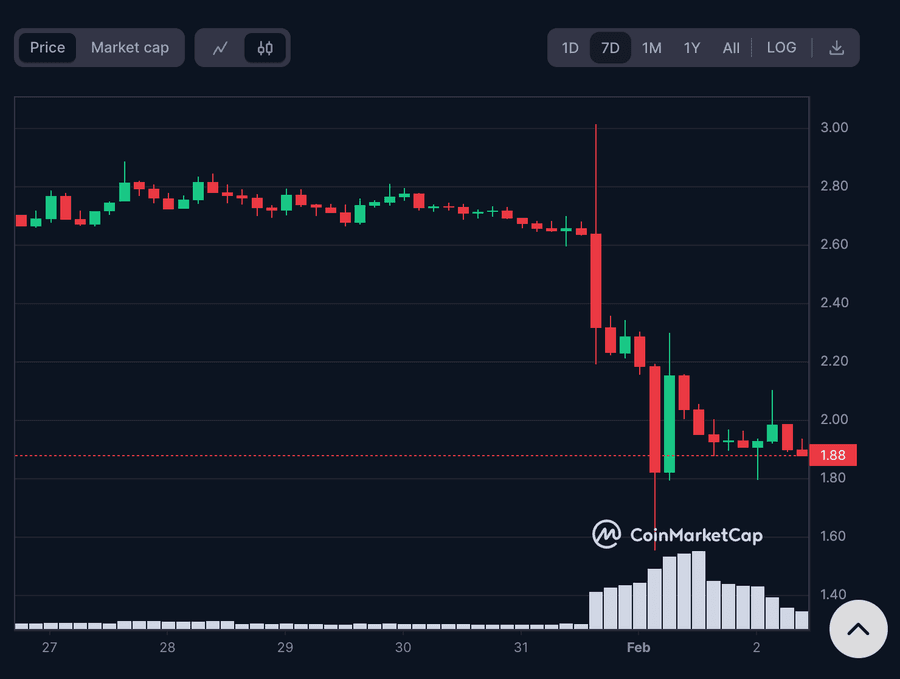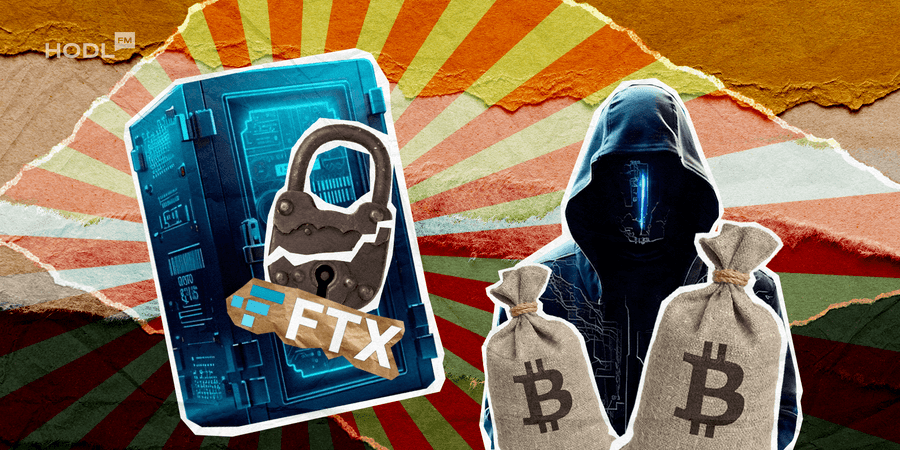Wait! Is that about FTX, which filed for bankruptcy in 2022? Well, yes and no. What do the facts tell us?
The Charges For Three
On January 24, a lawsuit against Robert Powell, Carter Rohn, and Emily Hernandez was submitted to the U.S. District Court for the District of Washington. The documents detail an attack on Victim Company-1 between November 11 and November 12, 2022.
Emily Hernandez supposedly claimed to be an employee of the firm, and Powell fraudulently gained access to data from AT&T, a cellular carrier that serviced the company. The group later hijacked the organization’s accounts and “transferred more than $400 million in digital currency” from crypto wallets.


SIM Swap, What? Is It Like a Phone Scam?
It’s just a little theoretical retreat. According to the criminal indictment:
A SIM swap attack refers to fraudulently inducing a carrier to reassign a cell phone number from the legitimate subscriber or user’s SIM card to a SIM card controlled by a criminal actor.
Related: Cheat Sheet for a REAL Crypto Criminal: Your Guide to Crypto Crime Terminology
SIM swap attacks are primarily executed to bypass multifactor authentication (MFA) and two-step verification (2FA) mechanisms. These security measures introduce an extra layer of protection during the login process for online platforms, including banking, crypto exchanges, and social media. Through a SIM swap, a malicious individual can overcome these security barriers, gaining unauthorized access to a person’s account, and enabling them to misappropriate funds and/or personal information.
Back To FTX
From the very day the news about these suspects appeared on the network, everyone started thinking that it was about FTX. Although from the very beginning, back in 2022, there was talk that FTX had made a spoof and stolen $400 million from itself!
Apparently, it wasn’t an inside job. The analyst firm Elliptic suggested that “Victim Company-1” is FTX because the dates and amount of funds stolen match the incident.
In the Bloomberg piece, “two people familiar with the case” confirmed the case’s connection to FTX.
Well, who started that? Probably, it was John J. Ray III, the CEO and restructuring chief of FTX. He described dealing with the exchange’s inadequate security and systemic deficiencies as “pure hell” after stepping in following its bankruptcy. This situation probably made it an attractive target for the trio accused of SIM-swapping almost a year later!
It does seem to be true, though. Even the X account of the SEC (U.S. Securities and Exchange Commission) suffered a SIM-swap attack not that long ago.
In the meantime, Powell, Ron, and Hernandez are charged with conspiracy to use electronic communications and identity theft from “50 victims!”
Again, What About FTX?
For today, FTX has refused to relaunch the platform and will undergo a wind-down process through which it plans to repay customers.
What happened to the FTT token after all this news? Unfortunately, the price of the token fell by more than 25% in 24 hours:

More on the Topic:
It’s obvious, though, that the drama around FTX is far from the end. Plus, there’s still no official confirmation that the firm mentioned in the court order is the bankrupt exchange.
Disclaimer: All materials on this site are for informational purposes only. None of the material should be interpreted as investment advice. Please note that despite the nature of much of the material created and hosted on this website, HODL.FM is not a financial reference resource and the opinions of authors and other contributors are their own and should not be taken as financial advice. If you require advice of this sort, HODL.FM strongly recommends contacting a qualified industry professional.




